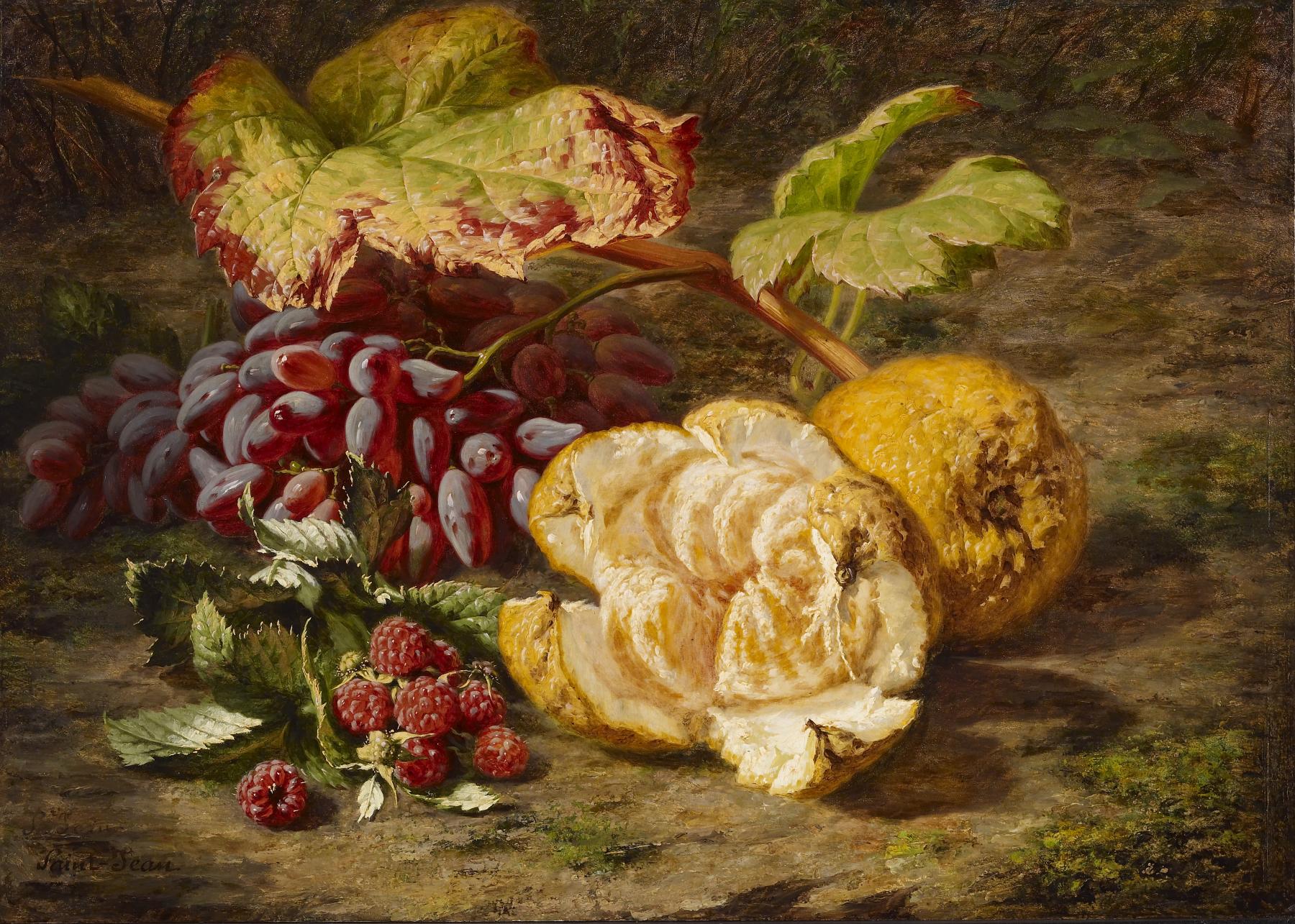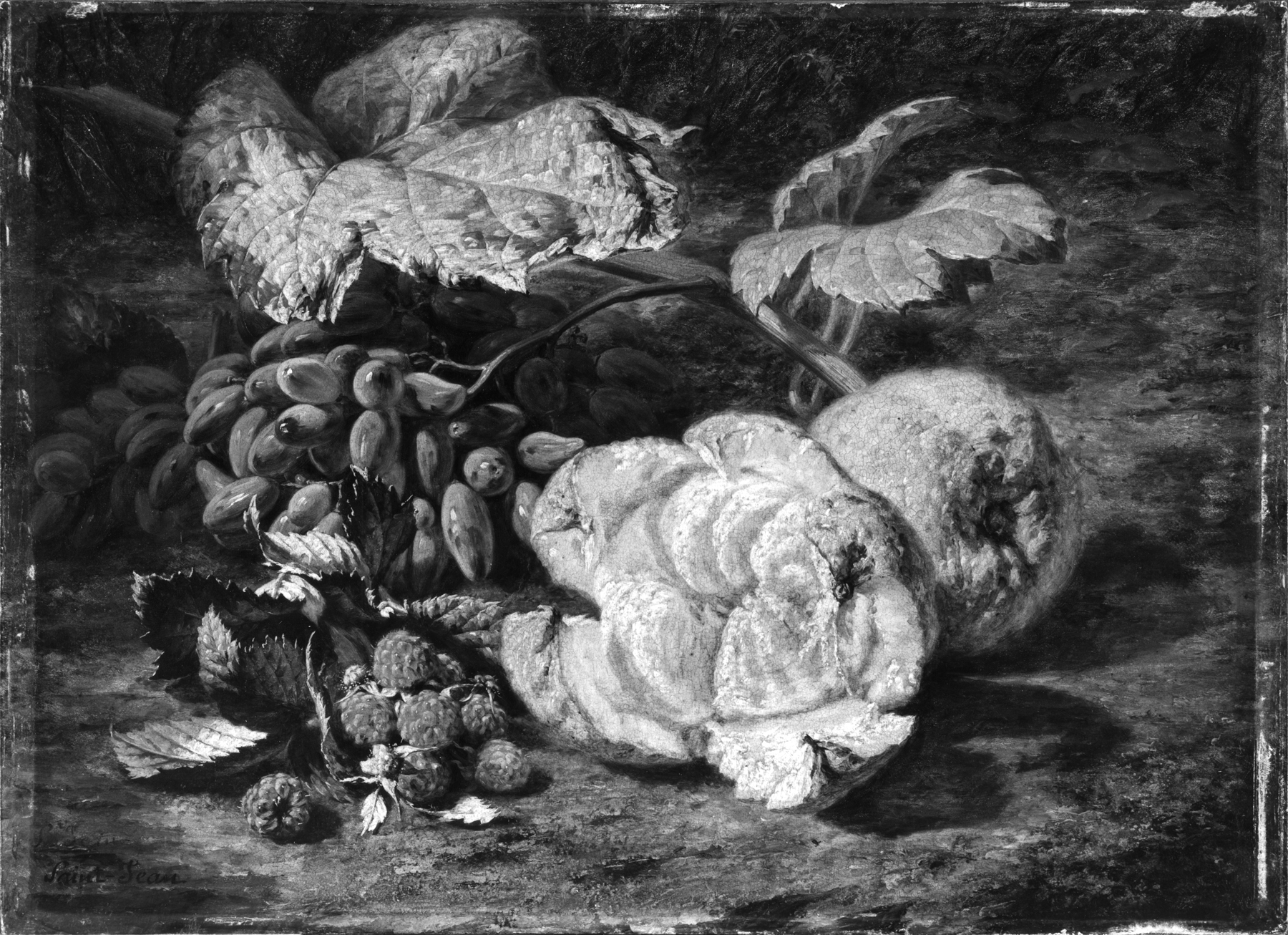Still Life with Fruit
(18th and 19th Centuries )
Saint-Jean was a prominent still life painter during the second quarter of the 19th century. He trained at the School of Fine Arts in Lyon, dedicating himself to flower painting early in his career and successfully exhibiting work at the Salon in Paris. Cut flowers or fruits dropped onto a forest floor occur often in Saint-Jean's work, giving them a slightly surreal quality to modern eyes. His paintings were often reproduced as textiles, and there was a strong link between artists from Lyon and the silk industry which flourished there. Similar in composition is "Flowers and Fruit," a still-life of 1853, showing grapes, raspberries, and roses, in the Wallace Collection, London (P601).
Inscription
Provenance
Provenance (from the French provenir, 'to come from/forth') is the chronology of the ownership, custody, or location of a historical object. Learn more about provenance at the Walters.
William T. Walters, Baltimore [before 1884, possibly from Goupil in 1863] [1]; Walters Art Museum, 1931, by bequest.
[1] See Diaries of George A. Lucas, vol. 2, page 161.
Exhibitions
| 2014-2016 | From Rye to Raphael: The Walters Story. The Walters Art Museum, Baltimore. |
Conservation
| Date | Description | Narrative |
|---|---|---|
| 7/11/2012 | Treatment | surface cleaned; varnish reduced; coated; inpainted |
Geographies
France (Place of Origin)
Measurements
H: 13 1/2 x W: 19 in. (34.3 x 48.3 cm); Framed H: 23 × W: 27 3/4 × D: 4 1/4 in. (58.42 × 70.49 × 10.8 cm)
Credit Line
Acquired by William T. Walters before 1884
Location in Museum
Not on view
Accession Number
In libraries, galleries, museums, and archives, an accession number is a unique identifier assigned to each object in the collection.
In libraries, galleries, museums, and archives, an accession number is a unique identifier assigned to each object in the collection.
37.168




